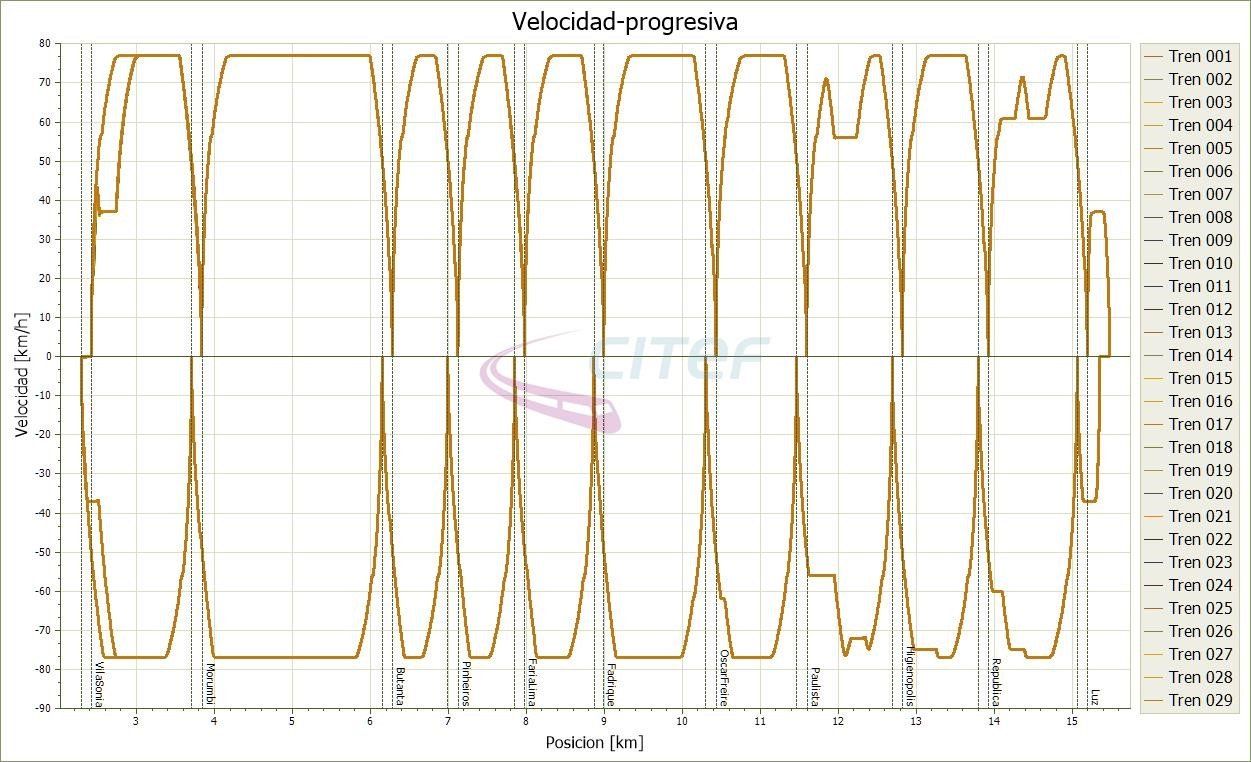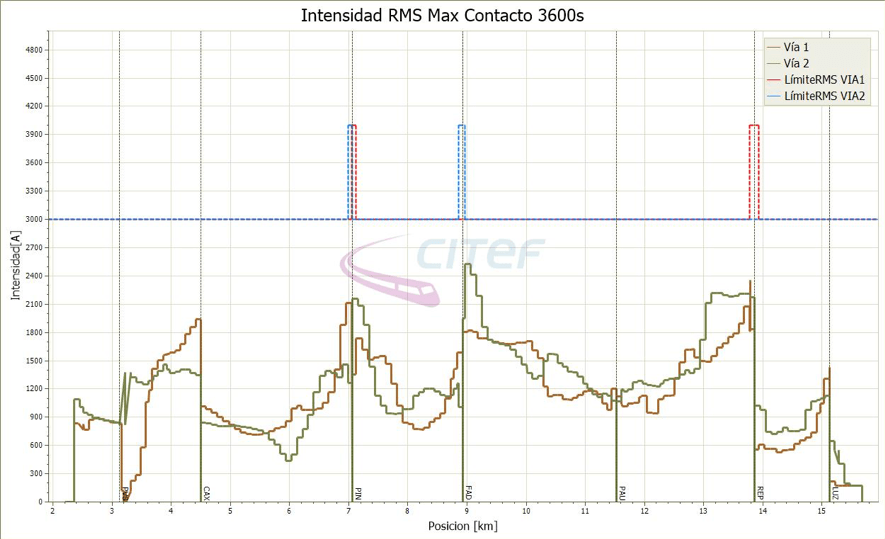STUDY OF THE ENERGY SYSTEM ON LINE FOUR OF SÃO PAULO METRO

CITEF was chosen by ViaQuatro, the operator of Line 4 of the São Paulo Metro, to analyse by means of simulation the line’s electrical traction and medium-voltage distribution systems. The tool used to carry out the simulations was HAMLET, an application developed by CITEF.
The study was composed of 5 different phases. The first phase focused on the line’s initial operating situation, adding one more station during each of the following phases. In each phase two headways (90 and 106 seconds) were considered, along with two train load scenarios: in the first scenario the trains ran with the maximum number of passengers, whereas in the second they ran with a load determined by demand, variable at each platform.
The task prior to the electrical analyses consisted of reproducing, for each of the scenarios configured, the operational meshes complying with the operation intervals.
Subsequently the model was developed for the electrical traction system composed of the traction rectifier substations, the conductors (feeders and catenary) and the return and earth system. The calculations performed during the simulation consider the power output which the trains call on or regenerate at each point in time, the configuration of the electrical system and the power output delivered by the substations, among other aspects. To carry out this analysis, for each of the scenarios considered, a study was made of the normal functioning of all substations and also of single degraded situations, in which one of the rectifier units fails, and double degradation, in which the entire rectifier substation ceases to be operational, for each of the substations on the line. Also, for cases in which the electrical results obtained were outside acceptable thresholds, the degraded operation intervals were calculated and verified.

In the medium-voltage analysis, the AC electricity distribution system from the primary substation, electrical connections with other metro lines and traction substations and other auxiliary systems were modelled, considering the characteristics of the conductors on each of the circuits and the consumptions of stations and other line equipment. The temporal evolution of all variables was simulated, taking account of the energy called up by auxiliary systems and traction substations at each point in time, and also considering the energy returned to the system by the reversible traction substations, and again analyses were carried out on normal-operation and degraded-operation scenarios.
More than 700 simulations were required to carry out this study, and in total more than 2,000 pages of reports were drawn up. This provided an insight into the functioning of the system, and its limitations for all current and future operating conditions on the line.








